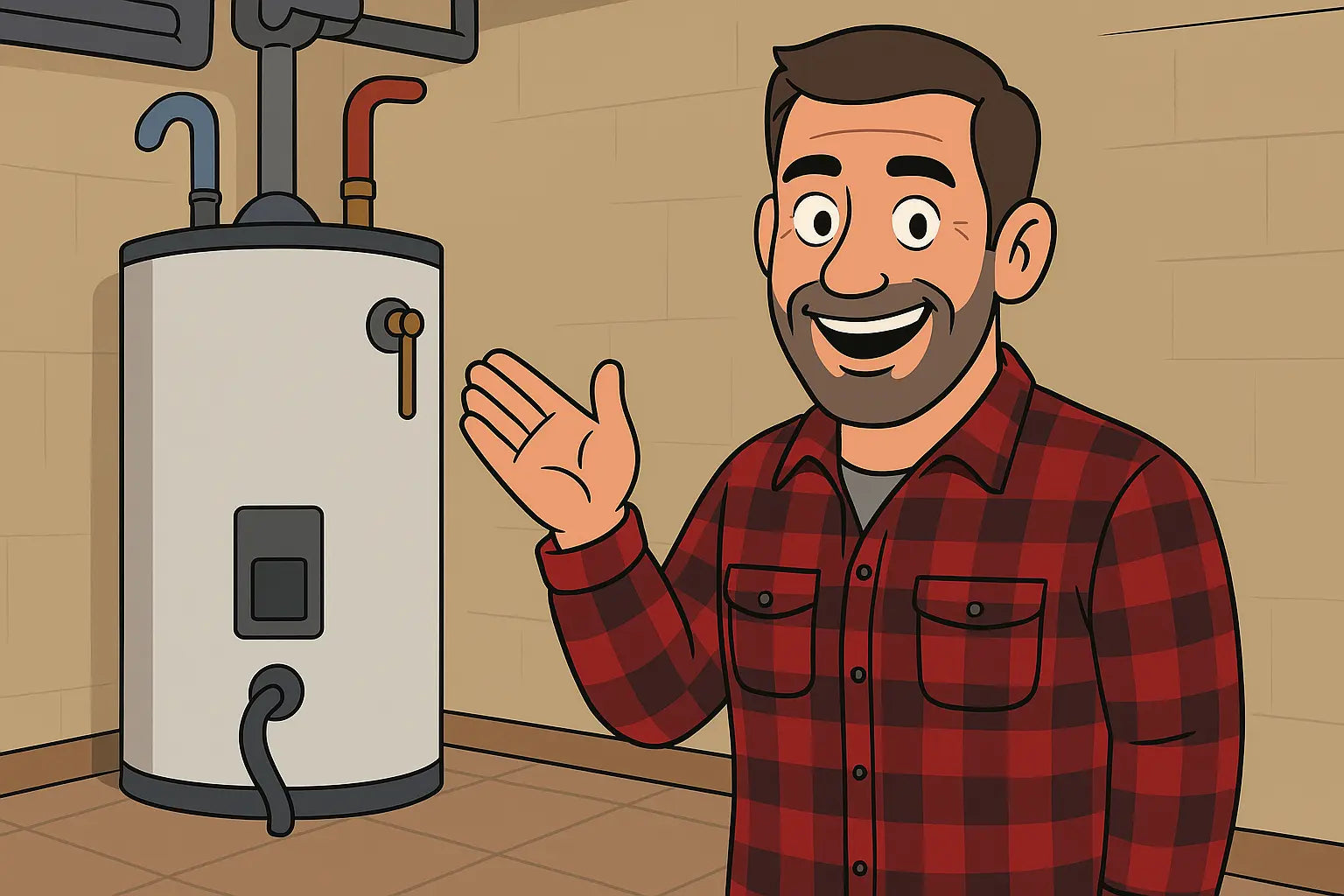Howdy Folks,
Mike Sanders here. Now I get it—you bought a new 50–60 gallon electric water heater and you're thinking, “How hard can it be to hook this thing up?” Well, I’m not here to discourage any good ol’ fashioned DIY, but I’ve seen more basements turned into indoor swimming pools than I care to count because someone skipped a step or two. So let me help you out before you fire up the wrench and breaker panel. Here are 10 classic homeowner mistakes when installing a big electric water heater—and how to steer clear of every single one. 💦⚡
1. Skipping the Permit
I know, no one likes red tape. But most local building codes require a permit to install a water heater, especially something as hefty as a 50–60 gallon unit. You don’t want to risk fines—or worse, voiding your homeowners insurance. Call your local building office and check first. Better safe than drywall-deep in regret.
Check this handy guide from Morningside Plumbing if you're not sure about your area.
2. Using the Wrong Size Wire
Electric water heaters pull serious amperage. A 4500-watt unit typically needs a 10-gauge wire and a 30-amp breaker. Use anything smaller, and you're asking for trouble. I once saw a guy use leftover 12-gauge from a ceiling fan project. It melted like butter under a heat lamp.
If you're unsure, refer to this NEC ampacity chart before you run that line.
3. Not Installing an Expansion Tank
This one catches a lot of folks off guard. Modern plumbing systems often have backflow preventers or pressure-reducing valves. Without an expansion tank, thermal expansion from heating 50–60 gallons of water can strain pipes and valves—or worse, cause your tank to rupture. Spend the extra $40–50 now and save yourself a flooded basement later.
4. Forgetting to Flush First
Nope, I’m not talking toilets. I’m talking flushing the lines before connecting the water heater. Debris, pipe shavings, or old corrosion can clog up the dip tube or heating elements. Run a few gallons through the inlet line into a bucket first, just to be sure you’re not pumping crud into your brand-new tank.
5. Sealing Threads with Teflon Tape (on Compression Fittings)
Big one here, folks. Teflon tape is great—when used on threaded connections. But if you're working with compression fittings on your flex lines or valves, adding tape can actually prevent a proper seal. Use pipe dope only where needed and follow the manufacturer's specs.
6. Dry Firing the Heating Elements
This is the fastest way to ruin your new electric water heater. If you power it on before it’s full of water, the heating elements will burn out in seconds. Fill it first, open the hot water taps to purge air, and only then flip the breaker.
7. Poor Ventilation Around the Tank
Just because it’s electric doesn’t mean it doesn’t need space. I’ve seen water heaters shoved into closets tighter than a pair of skinny jeans at Thanksgiving. Leave at least 6–8 inches around the unit so heat can dissipate and maintenance is doable. No one wants to unhook a unit just to replace a thermostat.
8. Not Leveling the Unit
If your tank’s leaning like the Tower of Pisa, you're setting yourself up for problems. Stress on fittings, uneven heating, and pressure valve issues can all stem from a crooked base. Use a level and shim as needed to get things straight and steady.
9. Skipping the Drain Pan
You’d be surprised how many folks skip this $20 life-saver. A drain pan (with a properly routed line) catches leaks and condensation before it hits your floor. And if you're installing on a second floor? It’s not optional. Trust me, your downstairs ceiling will thank you.
More info on code-compliant installations can be found over at Energy.gov.
10. Buying the Wrong Heater for Your Needs
Finally, make sure you actually need a 50–60 gallon tank. Bigger isn’t always better if you’ve only got two people in the house. It just means you're heating more water than you’ll use—costing you extra in electricity. Want help choosing? Check out this water heater sizing tool from Rheem.
Bonus Tip: Where to Get the Right Heater
If you’re in the market and haven’t picked yours out yet, I’ve got a good place for you to start. Head over to The Furnace Outlet’s collection of 50–60 gallon electric water heaters. Their lineup’s solid, pricing’s honest, and they’ll ship it straight to your door.
Final Word from Mike 🧰
Look, installing a 50–60 gallon electric water heater isn’t rocket science—but it also ain’t just plug-and-play. You’re dealing with high-voltage wiring, heavy plumbing, and the comfort of your whole household. So don’t skip steps or shrug off the manual. Whether you’re calling in a pro or doing it yourself, avoiding these 10 mistakes is your best bet for a trouble-free install and years of reliable hot showers 🚿.
And hey—if you’re in the market for a quality unit that won’t make you sweat the small stuff, check out the selection over at The Furnace Outlet’s 50–60 Gallon Electric Water Heaters. Solid gear, great prices, and fast shipping right to your door.
Need to know how to test and replacing heating elements in your 50-60 gallon electric water heater? Visit my guide: Burned Out or Just Cold?
Until next time—stay warm, stay safe, and keep your toolkit handy.
—Mike, your cool HVAC neighbor 🔧







